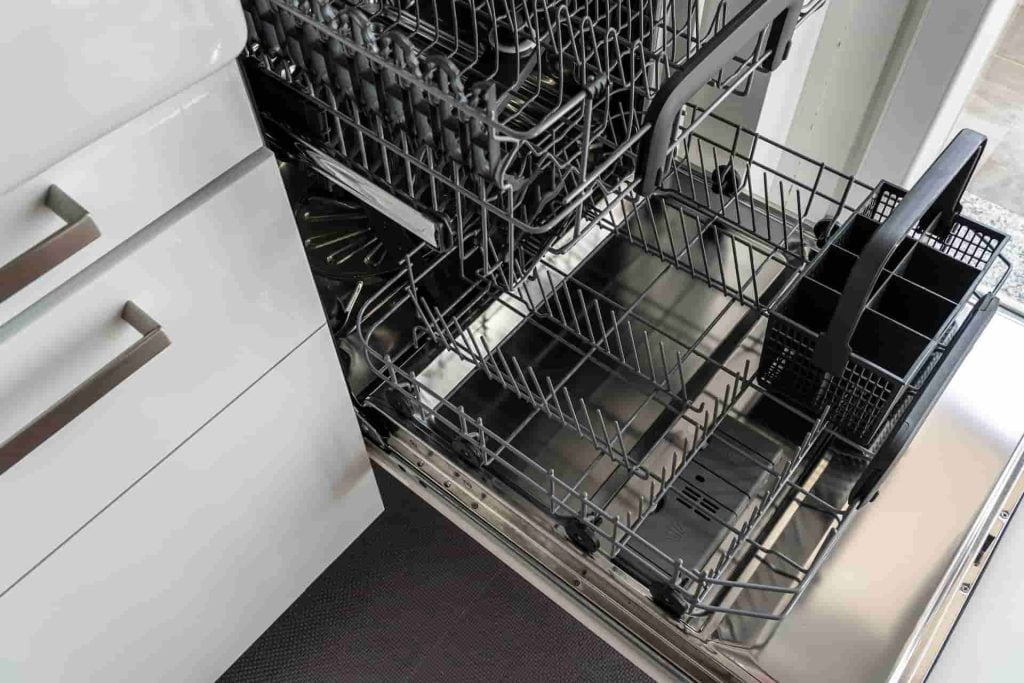
Dishwashers are a convenient and essential appliance in most households. It can be frustrating, especially when you have a pile of dirty dishes waiting to be cleaned. In this article, I will discuss the signs of clogged dishwashers, the causes of clogging, and how to unclog a dishwasher.
Signs that your dishwasher is clogged
Before we dive into the ways of unclogging a dishwasher, it is essential to identify the signs of a clogged dishwasher. Some of the warning signs include the following:
1. Water not draining: If you notice that the water in your dishwasher is not draining, this is a sign of clogging. The water may also drain slowly, indicating a blockage somewhere.
2. Unpleasant odor: A clogged dishwasher can produce an unpleasant smell. This is because food particles and debris get trapped in the dishwasher, leading to bacteria growth.
3. Poor cleaning performance: If you notice that your dishes are not getting cleaned properly or are coming out with spots, this could be a sign of clogging. Clogging can prevent water from reaching all parts of the dishwasher, resulting in poor cleaning performance.
Causes of dishwasher clogging
There are several reasons why dishwashers clog. Here are some of the most common causes:
1. Food particles: Food particles are the most common cause of dishwasher clogs. When food particles are not properly scraped off dishes before loading them into the dishwasher, they can get trapped in the dishwasher and cause a blockage.
2. Unpleasant odor: A clogged dishwasher can produce an unpleasant smell. This is because food particles and debris get trapped in the dishwasher, leading to bacteria growth.
3. Poor cleaning performance: If you notice that your dishes are not getting cleaned properly or are coming out with spots, this could be a sign of clogging. Clogging can prevent water from reaching all parts of the dishwasher, resulting in poor cleaning performance.
How To Unclog A Dishwasher: 5 Easy Steps:
Now that we have identified the signs and causes of dishwasher clogging let us discuss how to unclog a dishwasher
1. Plunger
A plunger is a useful tool when it comes to unclogging a dishwasher. Here is a step-by-step guide on how to use a plunger to unclog your dishwasher:
1. Fill the sink with hot water and let it sit for a few minutes.
2. Remove the drain cover from the dishwasher.
3. Place the plunger over the drain and apply pressure.
4. Pump the plunger up and down for about 20 seconds.
5. Check if the water is draining. If not, repeat the process.
2. Baking soda and vinegar
Baking soda and vinegar can be used to unclog a dishwasher. Here is a step-by-step guide on how to use baking soda and vinegar to unclog your dishwasher:
1. Remove the dishwasher’s bottom rack.
2. Mix one cup of baking soda with one cup of vinegar.
3. Pour the mixture into the bottom of the dishwasher.
4. Let the mixture sit for about 15 minutes.
5. Run the dishwasher on a hot cycle.
3. Plumbing snake
A plumbing snake can be used to remove any blockages in the dishwasher’s drain. Here is a step-by-step guide on how to use a plumbing snake to unclog your dishwasher:
1. Remove the drain cover from the dishwasher.
2. Insert the plumbing snake into the drain.
3. Rotate the plumbing snake to break up any blockages.
4. Pull out the plumbing snake and any debris.
5. Run the dishwasher on a hot cycle.
4. Hot water
Hot water can be used to dissolve any blockages in the dishwasher’s drain. Here is a step-by-step guide on how to use hot water to unclog your dishwasher:
1. Boil a pot of water.
2. Carefully pour the hot water into the dishwasher’s drain.
3. Let the hot water sit for a few minutes.
5. Run the dishwasher on a hot cycle.
5. Cleaning the filter
Cleaning the dishwasher’s filter can help prevent clogs. Here is a step-by-step guide on how to clean the dishwasher’s filter:
1. Locate the dishwasher’s filter.
2. Remove the filter.
3. Rinse the filter under hot water to remove any debris.
4. Scrub the filter with a soft brush to remove any stubborn debris.
5. Reinstall the filter.
Tips for preventing future dishwasher clogs
Prevention is always better than cure. Here are some tips to prevent future dishwasher clogs:
1. Scrape off food particles and debris from dishes before loading them
2. Run the garbage disposal before running the dishwasher.
3. Use a dishwasher cleaner regularly to prevent mineral buildup.
4. Clean the dishwasher’s filter regularly.
5. Use the right amount of detergent. Too much detergent can cause clogs.
When to call a professional
If you have tried all the above methods and your dishwasher is still clogged, it is time to call a professional. A professional can assess the problem and recommend a solution.
Conclusion and final thoughts
A clogged dishwasher can be frustrating, but it is a common problem that can be solved. In this article, we have discussed the signs and causes of dishwasher clogging and how to unclog a dishwasher. Remember to follow the tips to prevent future clogs and call a professional if needed.
With these tips, you should be able to keep your dishwasher running smoothly for years to come!